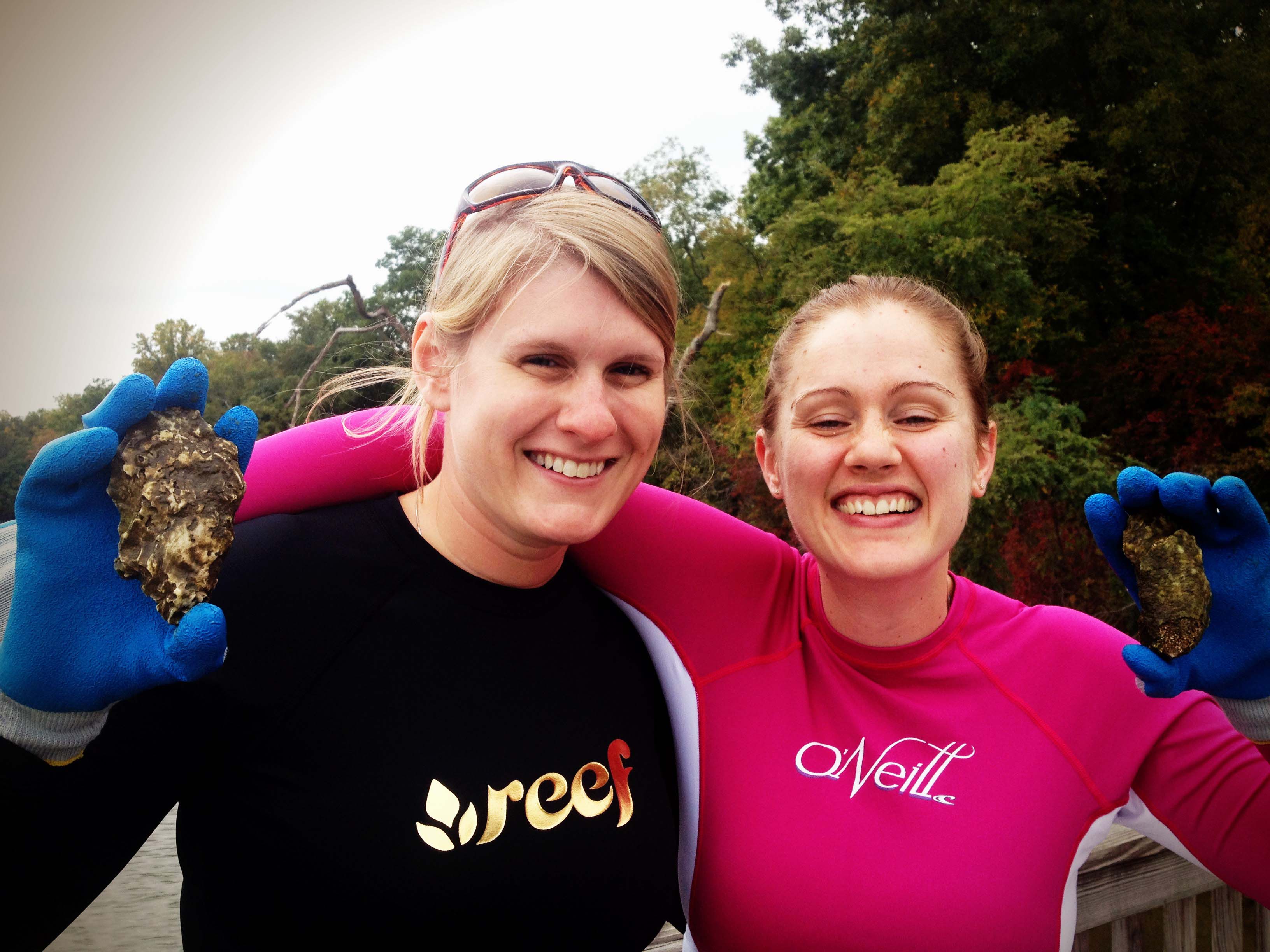by Katrina Lohan, Smithsonian Environmental Research Center and National Zoo postdoc
Many people cringe when they hear the word “parasite”—not Katrina Lohan and Kristy Hill. Combined, the two of us have spent 12 years conducting research on parasites that infect bivalves (oysters, clams, mussels, etc.), crustaceans (crabs, shrimps, lobsters, etc.), and songbirds. We are both passionate about studying marine parasites and want to better understand how parasitism impacts marine animals. For the next few months, we’ll be searching for these parasites in waters all along the east coast of North America, from Maryland to Panama.

Katrina Lohan (right) and Kristy Hill are preparing to scour the coasts of North America for marine parasites infecting oysters and other shellfish. (Kim Holzer/SERC)
While generally overlooked, marine parasites are extremely important members of marine communities. Some can kill large numbers of organisms, altering the food chain and changing an entire environment. Other parasites can infect many different organisms and be lethal to some, but not others. We are particularly interested in parasites that infect oysters, as they perform important functions, such as water filtering, creating complex reef structures that other animals and algae live on, and providing a food source for humans. Many bivalves are also important for regional economies, through both wild fisheries and aquaculture production.
Two oyster parasites are notorious in the Chesapeake, mainly for the role they have played in killing oysters throughout the Bay. These two parasites are Haplosporidium nelsoni, commonly referred to as MSX disease, and Perkinsus marinus, commonly referred to as Dermo disease.
Dermo was discovered in the 1940s killing oysters in the U.S. waters of the Gulf of Mexico. We don’t know if the parasite naturally spread north to Chesapeake Bay or hitchhiked on oysters that were transported from the Gulf of Mexico, but it is now found from the Mexican waters of the Gulf of Mexico north to Maine. MSX was accidentally introduced to Chesapeake Bay in the late 1950s, when the Pacific oyster was imported to the Bay from the Pacific Coast. MSX is now present along the east coast of the U.S. from Maine to Virginia. At first, both parasites were confined to the saltier parts of the Bay, such as where Chesapeake water meets up with water from the Atlantic Ocean. However, in the early 1990s, warm winters and droughts enabled Dermo disease to spread north along the east coast of the U.S. and further north in the Chesapeake Bay.
We know that both of these parasites are particularly sensitive to how salty and warm the water is—two aspects of coastal water that are predicted to change in upcoming decades as the global climate changes. Other marine parasites, including ones that have not been discovered yet, may also be able to move to different areas as coastal waters get warmer. There has previously been very little work conducted to examine what parasites are present in the warm waters of the U.S. and the Caribbean Sea, and what bivalves they infect. Therefore, we are heading south for the winter to figure out what parasites currently occur in and around the waters of the Caribbean. We will be collecting several different bivalve species from different locations, including the Smithsonian Marine Science Stations in Maryland, Florida, Panama, and Belize. We will use many different ways to study these parasites, including visual inspection of the oysters and DNA-based methods to test for the presence of parasites too small for the naked eye to see.
Fitness training is in full swing for long days of snorkeling and free-diving to collect the hundreds of animals for this study! Stayed tuned for updates regarding Katrina and Kristy’s sampling adventures!
This work is in collaboration with researchers at the Center for Conservation and Evolutionary Genetics at the National Zoological Park and the Marine Invasions Laboratory at the Smithsonian Environmental Research Center. Katrina Lohan is funded by a MarineGEO Postdoctoral Fellowship and Kristy Hill is funded by a Smithsonian Institution Grand Challenges Award.

